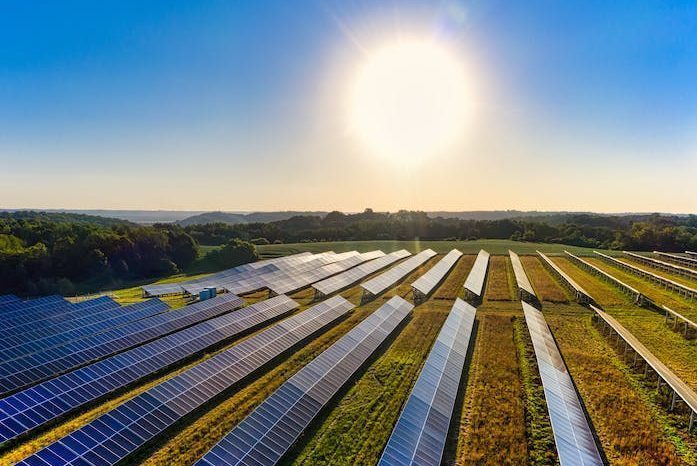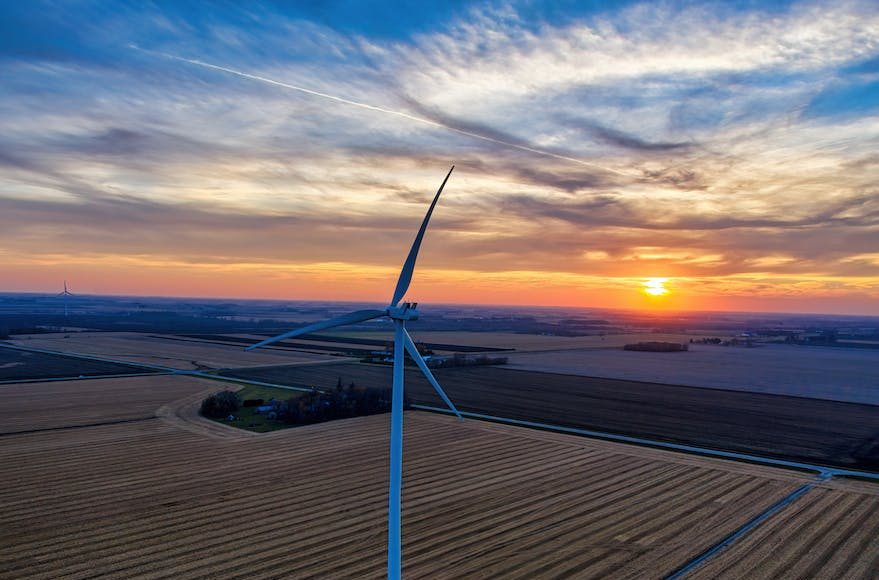The energy transition is the most crucial challenge of our time. With the increasing global population and growing economic development, the demand for energy continues to rise. However, our reliance on fossil fuels has come at a significant environmental, social, and business cost. It is time to take bold actions and transform our energy mix towards clean and renewable sources for the future of the planet, future generations, and industries. However, achieving this transition effectively, sustainably, cost-effectively, and prosperously for all requires concerted efforts. Here are some ways we can accomplish this goal:
Adoption of renewable energy technologies such as:





Solar Energy
Produced from solar radiation. It is harnessed through photovoltaic (PV) or solar thermal panels, as they assist production facilities in generating their own energy and reducing their dependence on traditional electrical grids.
It is particularly attractive for industries because peak electricity demand often occurs during daylight hours.
Wind Energy
Wind energy generates electricity from the wind. It is utilized through wind turbines and is one of the most cost-effective and mature technologies in the renewable energy sector. This energy improves energy resilience by reducing dependence on fossil fuels and is beneficial for businesses that rely on large amounts of energy, such as manufacturing plants and refineries.
Hydropower
Obtained from the movement of water, utilizing dams or hydraulic turbines. It is important for companies involved in power generation as it can provide a stable, reliable, and predictable energy source, especially in countries with significant hydropower capacity. Additionally, it can be used as reserve energy, for water pumping, and wastewater treatment.
Geothermal energy
Produces electricity from the natural heat generated within the Earth’s interior. One advantage of geothermal systems is that they can have a lifespan of over 25 years, providing a constant source of energy for many years.
These systems offer low-cost heating and cooling solutions to production facilities.
Biomass Energy
Refers to the generation of energy from organic matter, such as agricultural or forestry residues. This technology can be significant for companies that generate organic waste.
In addition to generating electricity, biomass energy can also provide heating and, in some cases, be used as fuel in industrial processes.
For companies, the use of renewable energy technologies can bring several benefits, such as reducing energy costs, decreasing carbon footprint, complying with environmental regulations, and enhancing corporate image. Implementing these technologies can improve energy efficiency and enhance competitiveness in the market. While the initial investment in renewable energy technologies may be significant, in the long run, they can generate significant savings in energy and maintenance costs, resulting in a positive impact on the company’s profitability.
By implementing technologies for improving energy efficiency, for example:

LED Lighting, is more efficient than conventional lighting as it consumes less energy and has a longer lifespan, allowing for greater flexibility in light control and regulation. This reduces the overall energy demand, which can help curb the increase in emissions.
Efficient HVAC technologies, such as high-efficiency air conditioning systems, heat pumps, and ventilation systems, can significantly reduce energy consumption for heating and cooling buildings.
Thermal Insulation, Proper thermal insulation in walls, roofs, and floors can significantly improve the energy efficiency of buildings and reduce the amount of energy required for heating and cooling.
Energy Management Technology, enables users to monitor and control the energy consumption of equipment and systems in real-time, allowing for greater operational efficiency and cost reduction.
High-Efficiency Motors, utilize technologies such as variable speed and energy recovery, which can significantly reduce energy consumption in high-demand applications such as transportation systems and industrial machinery.
Thanks to the energy transition, excellent economic and broader social benefits can be achieved. Both investments in renewable energy technologies and energy efficiency can create jobs in the production, installation, and maintenance of equipment, as well as in research and development.
SOURCES OF CONSULTED INFORMATION
(1) Webside of International Renewable Energy Agency. (IRENA) – Energy transition, technologies https://www.irena.org/Energy-Transition/Technology
(2) Webside of International Renewable Energy Agency. (IRENA) – Power generation costs https://www.irena.org/Energy-Transition/Technology/Power-generation-costs





